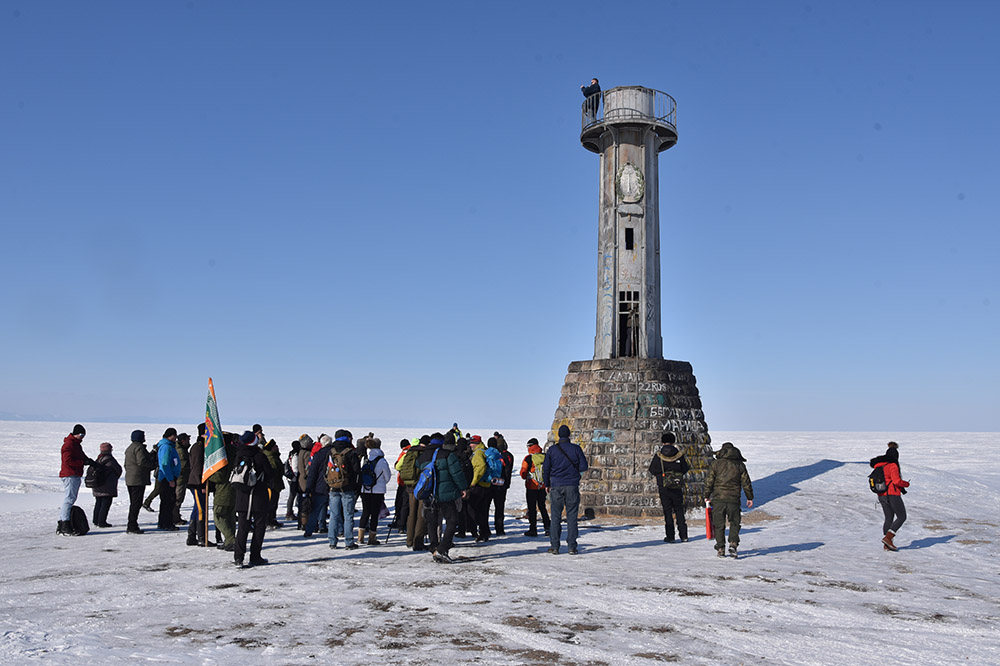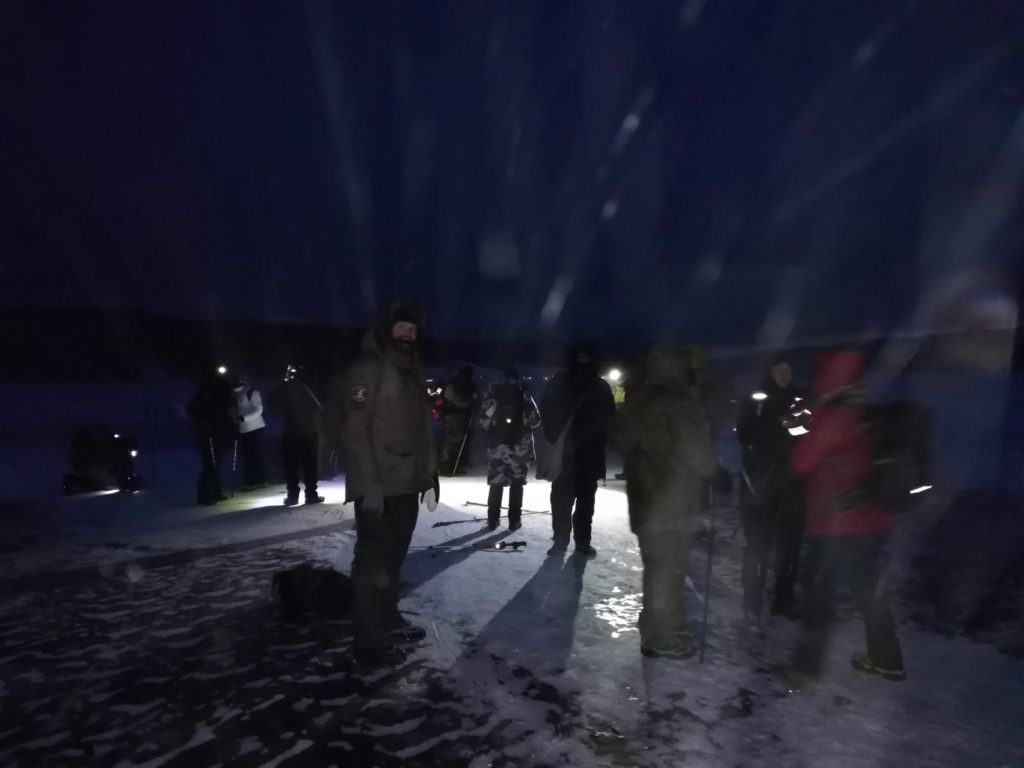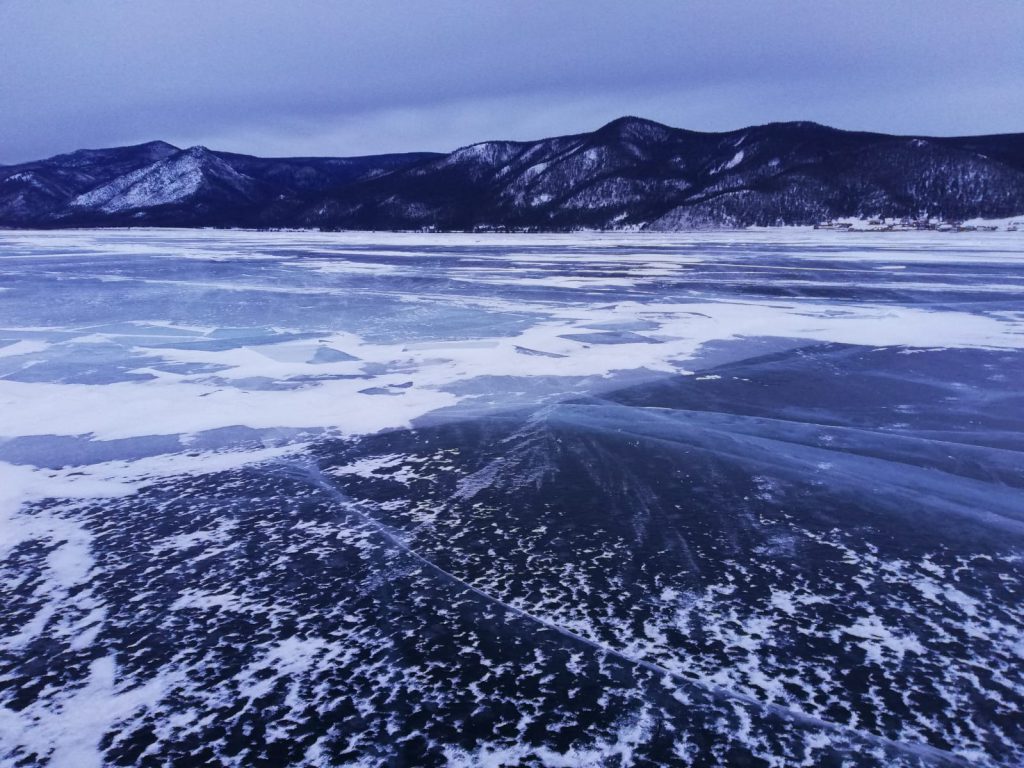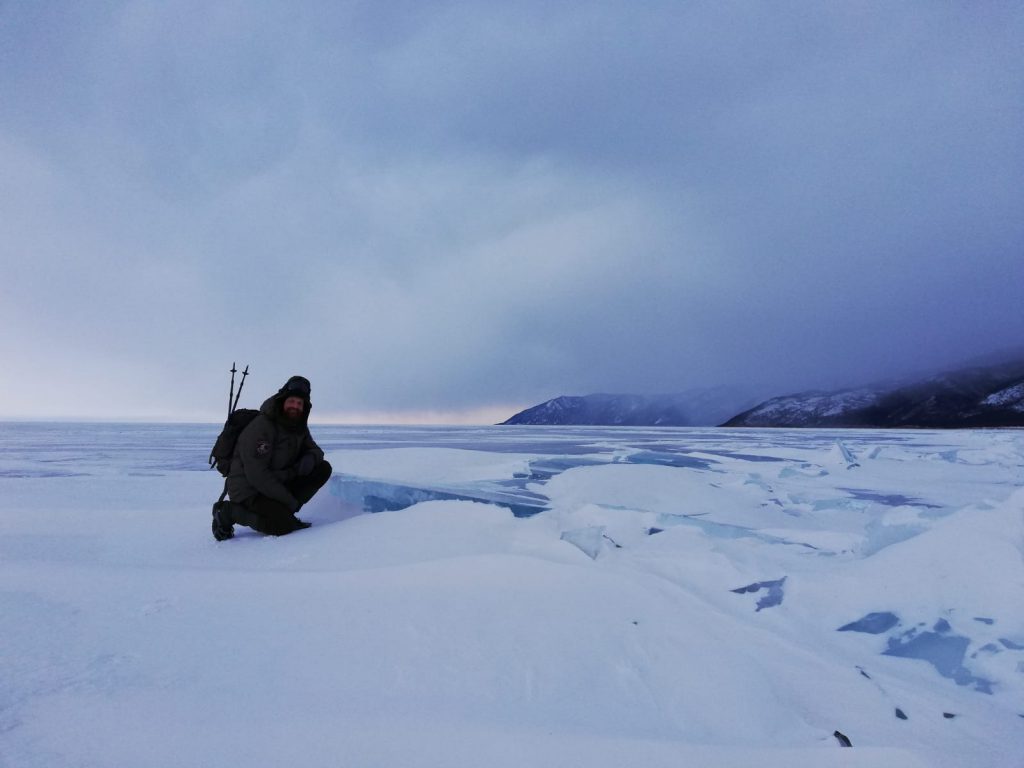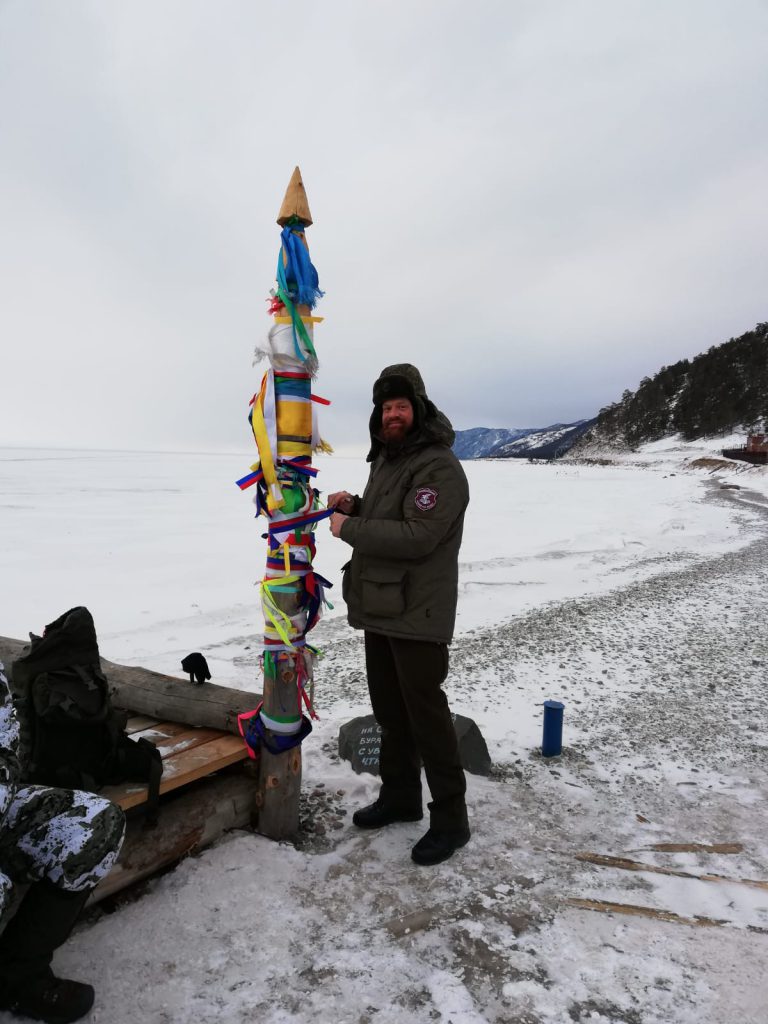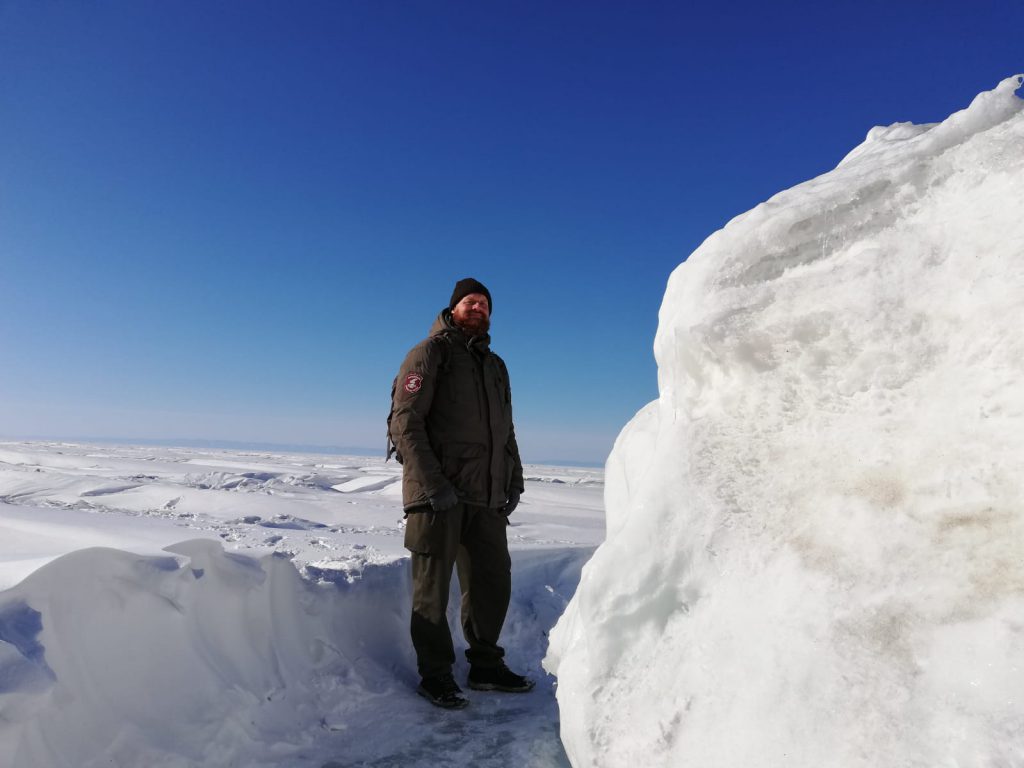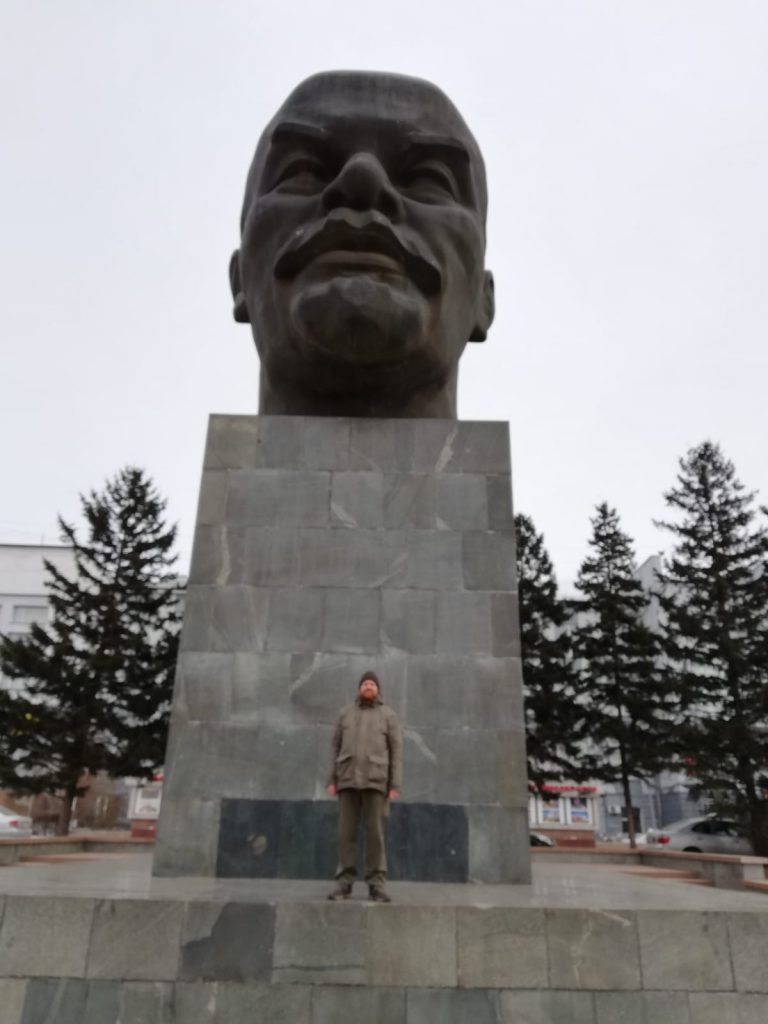On 7th March 2020 the “Great Siberian Ice March” took place. A daring marching group crossed the frozen Lake Baikal in Siberia.
With more than 25 million years of age, Lake Baikal is the oldest and, at 1642 metres, the deepest lake on earth and the most important freshwater reservoir on earth. In terms of area, it is as large as Belgium, with a length of 673 km and a width of 82 km. Temperatures of around minus 40 °C cause the lake to freeze completely for several months. The 2 to 3 metre thick layer of ice not only supports normal road traffic, it is also navigable for heavy battle tanks.
On February 28th 1920, the last returnees of World War I crossed Lake Baikal by foot on their way to freedom. Among them were also many Czechs, who had been taken by the k.u.k. Army to Russia. For the 100th anniversary of this crossing, volunteers were searched who wanted to imitate this march across the lake.
On March 4th at 04:00 o’clock in the morning the plane of the Czech government took off from Prague, which carried 80 expedition members free of charge to Krasnoyarsk in Siberia. 8 hours of time change illustrate the distance travelled. After landing in Krasnoyarsk, the city was visited. During the next night, the Trans-Siberian Railway took the expedition to Tajset in an 8 hour journey.
On March 5, Tajset was visited and a wreath was laid on the site of the former gulag. During the second night in Siberia, the Trans-Siberian Railway covered the distance to Irkutsk in an 11-hour journey. Irkutsk is one of the most beautiful cities in Siberia, the city and some monuments could be visited. The evening of March 6th was spent by the expedition group on the banks of Lake Baikal. Preparations for the march the next day were made.
On March 7th the march across the frozen Lake Baikal started at 0400 o’clock in the morning. As the only Austrian in this memorable expedition the IR84 sent his First Sergeant. Good winter clothing was necessary for the march, the temperatures in Siberia are a little different than in Europe. To be able to cross the mirror-smooth ice spikes had to be mounted on the shoes.
Right at the start there was a storm with up to 120 km/h wind speeds, which made the temperature feel like minus 70°C. The snow came along horizontally, fallen objects disappeared in the darkness of the night even before they had fallen to the ground. However, the march was started, ski goggles protect the eyes from the storm.
After about an hour the storm stopped and the rest of the day was absolutely calm. A magnificent sunrise rewarded the brave marchers. Even in the Siberian ice desert, the sun can shine so strongly that uncovered skin can get sunburnt. The incomparable scenery of the frozen lake and the special nature of this adventure was the greatest reward for all march participants. Around midnight the marchers reached the southern shore of the largest lake on earth and looked forward to a few drinks in the hotel.
The last day of the expedition was spent in Ulan- Ude, also in this town there are some sightseeings.
Back to Prague the government plane of the Czech Republic brought us again in a special flight. In Novosibirsk a stopover was necessary to refuel. After a flight of 10 hours the clocks were set back 2 hours, because we had flown through 8 time zones again. So we arrived 2 hours after our departure at the Mongolian border in Central Europe.

